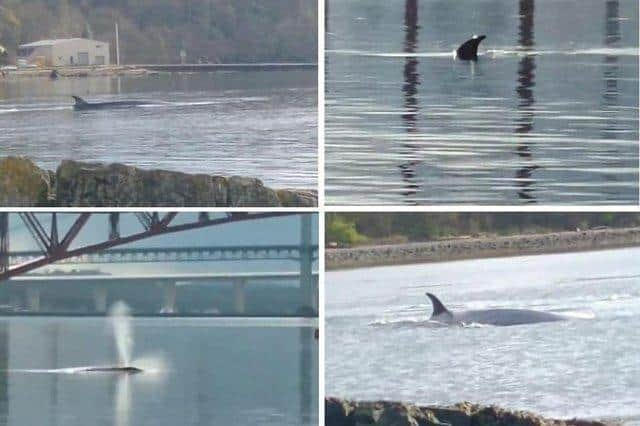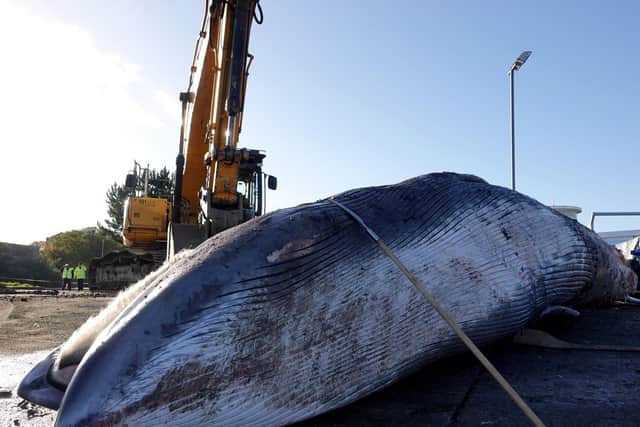Firth of Forth rare Sei whale's bones could be displayed in Edinburgh museum
and live on Freeview channel 276
The Sei whale, a species rarely seen in Scotland, was found dead on November 11 after stranding on the shore at Dalgety Bay in Fife.
Parts of the 37 foot long male including its skull and baleen and other bones from the pelvis, tail and flippers were taken by National Museums Scotland (NMS) for research along with other samples. Because of their rarity in Scotland, they could be displayed in the future.
Advertisement
Hide AdAdvertisement
Hide AdWatch: Unbelievably rare Sei Whale spotted splashing around in the Firth of ForthGeorg Hantke, curatorial preparator at NMS, said: "Sei whales are one of the rarest baleen whales you could possibly find in and around the British Isles. This is only the second specimen in over 30 years to wash up in Scotland.
"The National Museum of Scotland has one of the largest cetacean collections in the world, but we only have two Sei specimens. The more samples we have for research, the more we can discover.
"We have over 4000 whales and dolphins and 99 per cent of all the specimens we collect for research only but of course this is such a rare animal it could go on display, even just temporarily."
Sei whales are among the largest living creatures growing up to 64 feet long and swim at speeds of up to 31mph, feeding almost exclusively on small crustaceans.


Advertisement
Hide AdAdvertisement
Hide AdTests on the whale that stranded in Fife showed it had an empty stomach and depleted energy. Parasites were found in the whale's gut and there was an ear infection thought to be bacterial.
The day before it died, the whale had become stuck nearby at North Queensferry, which tests showed had also caused internal damage even though it was seen to free itself in the rising tide.
Veterinary pathologist Dr Andrew Brownlow, organiser of the Scottish Marine Animal Stranding Scheme, part of the University of Glasgow, said: "To show an animal like this that has come into these waters, even under such sad circumstances, and get people aware and interested in what's going on in the marine environment, can only be a positive thing."
A message from the Editor:


Thank you for reading this article. We're more reliant on your support than ever as the shift in consumer habits brought about by coronavirus impacts our advertisers.
If you haven't already, please consider supporting our trusted, fact-checked journalism by taking out a digital subscription.
Comment Guidelines
National World encourages reader discussion on our stories. User feedback, insights and back-and-forth exchanges add a rich layer of context to reporting. Please review our Community Guidelines before commenting.